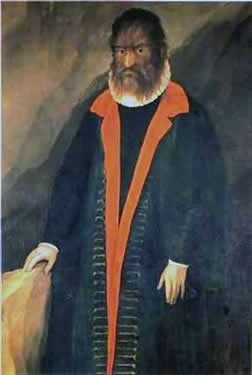Behold, Esau my brother is a hairy man . . .
Genesis 27:11
The Ambras syndrome is a rare genetic disorder characterized by an excessive growth of hair over the whole body—especially the face, ears, arms, shoulders, back, and legs—and sometimes accompanied by an overgrowth of the gums. Caused by a defect in one of the chromosomes, it appears to have been first encountered in the Middle Ages in Pedro Gonzales (Petrus Gonsalvus) from the Canary Islands, who lived from 1537 to 1618. His three daughters, Maddalena, Francesca, and Antonietta were also affected. They were named the Ambras family, after the castle in Innsbruck, Austria, where their portraits were found. Since the original description only about 50 such persons have been reported. They have often been considered to be natural wonders, curiosities, animals, werewolves, or presented as gifts. Some have been circus performers, often going under names such as wolf man, lion-faced man, dog-faced man, or the bearded woman.

Oil on canvas
Ambras Castle, Gemäldegalerie,
Kunsthistorisches Museum

Oil on canvas
Musée du Château, Blois
Lavinia Fontana (1552–1614) was a prominent painter working in Bologna and Rome. She was one of the earliest woman artists to achieve wide recognition, remembered to this day for her excellent portraits and religious paintings. She painted a portrait of Antonietta Gonzalez ca. 1595, the 8–10-year-old daughter of Pedro Gonzalez.

Leave a Reply